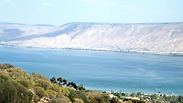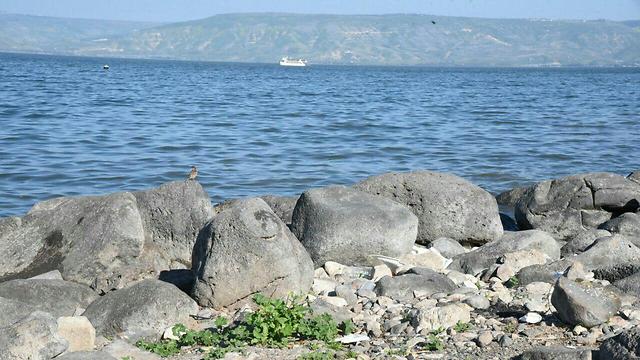
The Sea of Galilee's water level was recorded last May as the lowest it has been in almost a century, according to a report released by the Water Authority. A statement put out by the authority said that last May's recording showed the lowest water level since May 1920, when official measurements of the Sea of Galilee were first recorded.
During the month of May 2017, the lake lost 15 cm of its water level, with its amount of water decreasing by 9 million cubic meters.
The Water Authority added that the amount of water available—which is calculated by adding rain, stream and spring water that flows into the Sea of Galilee while subtracting water evaporation—stands at 9 million cubic meters, an all-time recorded low.
The Sea of Galilee's dire condition was made worse in recent years, due to a rare, four-year sequence of droughts in the north, which have caused water pumping from the Sea of Galilee to almost completely stop. The water level throughout May remained relatively stable due to steady water flows into it from the Jordan River.
Water Authority Spokesman Uri Shor noted that although summer has not fully begun, the decline in water level started earlier this year, at a rate of approximately half a centimeter a day. At the height of the summer, the Sea of Galilee evaporates at a rate of about one centimeter per day.
According to hydrologists at the Water Authority, the Sea of Galilee's water level is expected to go down by another meter by the beginning of the next rainy season, expected to start around next November, at which time it is due to be 214 centimeters below sea level.
The Water Authority added that such a low water level "will lead to further withdrawal of water from the shores of the Sea of Galilee and to various environmental and ecological phenomena."

















